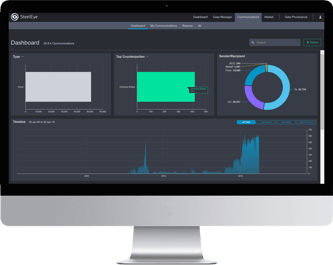Over recent years, there has been a wealth of regulatory change which combined with the swiftly changing operational environment has created an increasingly complex compliance landscape. Not only has it now been over three years since MiFID II was introduced, but the UK has also officially left the European Union. To address any confusion around changes to the regulatory financial services landscape in Europe and in the UK, this article recaps some of the main differences between MiFID and MiFIR (or MiFID II and MiFIR), and provides an overview of the effect of Brexit on the EU rules.

What is MiFID II and MiFIR?
The Markets in Financial Instruments Directive (MiFID II) and the Markets in Financial Instruments Regulation (MiFIR) are the guidelines and rules that govern the European financial markets. They were created to strengthen the investor protection, increase transparency, and make these markets more efficient and resilient.
What is the difference between MiFID and MiFIR?
MiFID II and MiFIR are interconnected and strive to achieve the same results, however, they are different in the way they are implemented. The main difference between MiFID and MiFIR is that the directive (MiFID) sets out the goals that EU member states should strive to meet, whereas the regulation (MiFIR) imposes rules that all countries must follow.
MiFIR is particularly known for its transparency requirements which impose reporting rules on authorised firms. MiFIR Transaction Reporting is an obligation on authorised financial services providers that requires them to send all their trade data at T+1 intervals to an Approved Reporting Mechanism (ARM).
MiFID II vs MiFIR in simple terms:
|
|
MiFID - Directive
|
MiFIR - Regulation
|
|
What is it?
|
A legislative act that presents goals that countries in the EU need to achieve.
|
A binding legislative act with rules that all member states must meet.
|
|
How is it implemented?
|
Locally - individual countries can devise their own laws on reaching the goals.
|
Centrally - all member states need to comply with the regulation as it is set out.
|
When was MiFID II vs MiFIR introduced?
MiFID was first introduced in 2004 and came into effect in 2007. However, it was replaced by MiFID II on January 3, 2018, to further harmonise the rules for financial services firms with EU clients. Compared to MiFID I, MiFID II is a much wider-ranging legislation and has been characterised as one of the cornerstone pieces of the European financial services legislation. MiFIR came into effect on 3 January 2018 alongside with MiFID II.
Where does MiFID II and MiFIR apply?

MiFID II and MiFIR apply to all regulated financial services firms undertaking MiFID business in the EU and those firms providing services cross-border. This includes data reporting service providers, investment and fund managers, bankers, traders, exchange officials, and all businesses across the globe which provide investment services or perform investment activities in the European Union.
What happens to MiFIR and MiFID in the UK after Brexit?
Both MiFID II and MiFIR have been adopted locally by the UK, and the UK regulator, the Financial Conduct Authority, has played a key role in shaping European regulations. However, there are fears in the EU that the FCA will lighten the local rules to create a more competitive environment for UK firms. In fact, the FCA has already announced it is reviewing a number of aspects of MiFID II, including the effectiveness of the RTS27 reporting and the later phases of the SFTR regulation.
When it comes to MiFIR Reporting, there has been some change already. This is because both the UK and the EU now support individual MiFIR reporting schemes.
So whilst the MiFIR reporting obligations for UK firms are similar to the EU requirements, there will be some instances where firms will be required to report twice, to satisfy both EU and UK MiFIR reporting requirements. For example, as discussed in a previous blog, when a EU investment firm has executed its transactions via a UK branch or vice versa, the entity now has a dual reporting obligation. The branch is no longer able to discharge the reporting obligations by transmitting orders to the other entities. As a result, investment firms that operate in both regions now need to be contracted to both a UK Approved Reporting Mechanism (ARM) as well as an EU ARM to allow the functionality of dual reporting.
Will there be a MiFID 3? Or Could Brexit bring MiFID III?
 When MiFID II celebrated its second birthday, the European regulator started to prepare a series of review reports on the effectiveness of MiFID II - making many wonders if there could be a MiFID III on the horizon. Ever since its implementation, firms have been complaining about the costs and unclear benefits of MiFID II. For example, the transparency data delivered through the Trade Reporting regimes has been a significant issue. The possibility of a third revision - a MiFID III - could be a welcome change to address some of the challenges and improve the quality of data regulators use to monitor for market abuse and insider dealing. However, the possibility of a MiFID III also sparks concern across financial services firms since they have already invested significantly in their technology and people in order to meet the latest iteration of the regime.
When MiFID II celebrated its second birthday, the European regulator started to prepare a series of review reports on the effectiveness of MiFID II - making many wonders if there could be a MiFID III on the horizon. Ever since its implementation, firms have been complaining about the costs and unclear benefits of MiFID II. For example, the transparency data delivered through the Trade Reporting regimes has been a significant issue. The possibility of a third revision - a MiFID III - could be a welcome change to address some of the challenges and improve the quality of data regulators use to monitor for market abuse and insider dealing. However, the possibility of a MiFID III also sparks concern across financial services firms since they have already invested significantly in their technology and people in order to meet the latest iteration of the regime.

 |
Let us show you how we simplify compliance
We’ll give you a tour of our platform, so you can see how data-driven compliance drives better results.
|



 When MiFID II celebrated its second birthday, the European regulator started to prepare a series of review reports on the effectiveness of MiFID II - making many wonders if there could be a MiFID III on the horizon. Ever since its implementation, firms have been complaining about the
When MiFID II celebrated its second birthday, the European regulator started to prepare a series of review reports on the effectiveness of MiFID II - making many wonders if there could be a MiFID III on the horizon. Ever since its implementation, firms have been complaining about the 








